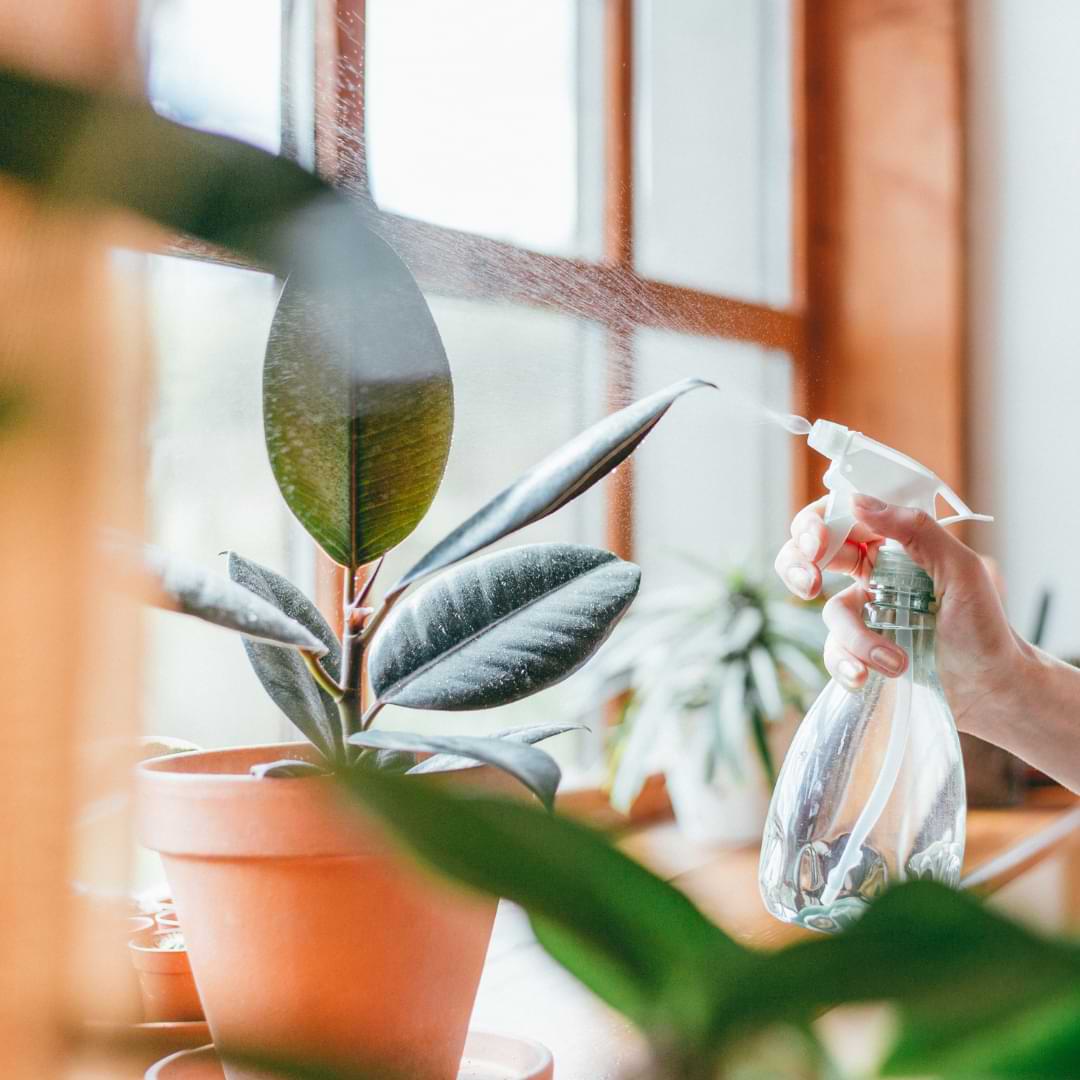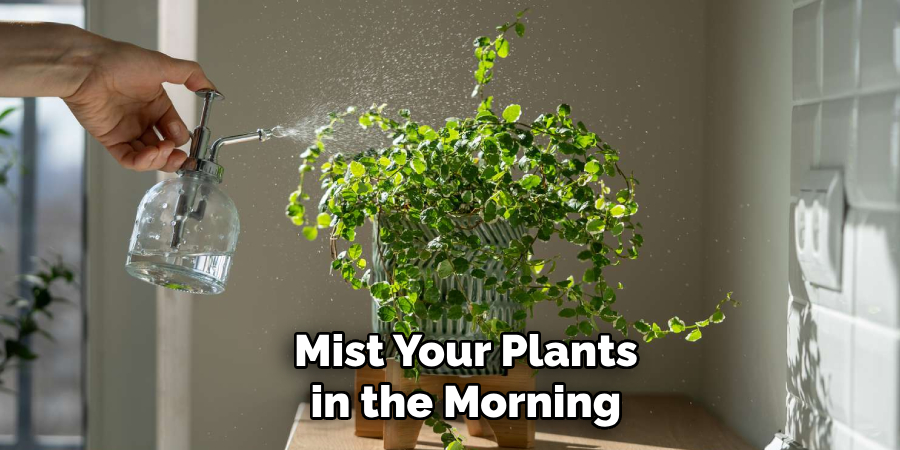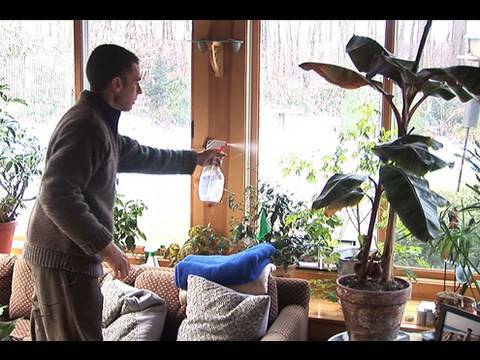To mist plants, spray water onto their leaves with a fine misting spray bottle. This helps to increase humidity levels and provide moisture for the plants’ foliage.
Creating a suitable environment for your plants is important for their overall health and growth. By misting them regularly, you can prevent dryness, which can lead to wilting or browning of leaves. Proper misting technique involves evenly spraying a fine mist of water onto the plant’s foliage, ensuring that all leaves are covered.
It is recommended to mist plants in the morning or evening when the temperature is cooler to avoid damaging the foliage or causing water droplets to evaporate too quickly. Adequate misting can be beneficial for a wide range of indoor and outdoor plants, including tropical and moisture-loving varieties.

Credit: houseplantresourcecenter.com
Why Misting Is Essential For Plants
Misting is an essential practice for healthy plants, providing numerous benefits for their growth. By misting your plants, you can increase humidity levels, preventing them from drying out. This is especially important for plants that thrive in tropical environments. Additionally, misting helps in the absorption of nutrients and enhances photosynthesis, leading to vibrant foliage and blooming flowers.
It also aids in the prevention of pest infestations and diseases, as pests and pathogens tend to thrive in dry conditions. Regular misting can rejuvenate plants, especially during hot summer months or in dry indoor environments. However, it is crucial to avoid over-misting, as excessive moisture can lead to fungal growth and root rot.
Understanding the role of misting in plant care is crucial for any avid gardener or plant enthusiast. Keep your plants healthy and thriving by incorporating misting into your regular plant care routine.
How to Mist Plants: Step by Step Guide
Mist Plants Properly
Misting plants properly requires choosing the right watering tools and considering the timing and frequency. Different plant species have different needs, so precautions should be taken accordingly. The choice of watering tools is crucial to ensure effective misting. Determine the right timing and frequency for misting based on the specific plant’s requirements.
Take into account factors such as humidity, temperature, and sunlight exposure. It is essential to be cautious while misting different plant species, as some may be more sensitive to moisture than others. Monitor the plants for any signs of stress or overwatering.
By following these guidelines, you can effectively mist your plants and promote their healthy growth without any harm or damage.
Mist Types And Their Effects On Plants
Misting plants is an important aspect of their care that can greatly affect their overall health. Different misting methods, such as overhead misting, fine misting, and coarse misting, have varying effects on plants. Understanding the impact of mist size on plant health is crucial in providing optimal care.
Factors to consider when choosing the appropriate mist type for different plants include their specific needs and environmental conditions. By avoiding commonly overused words and phrases and keeping sentences brief, this blog post aims to deliver seo-friendly, unique, and easy-to-understand content.
The goal is to provide valuable information to readers on the importance of misting plants and how to choose the right misting method for their specific plant species.
Frequently Asked Questions On How To Mist Plants
How Often Should I Mist My Plants?
Mist your plants 2-3 times a week to increase humidity and prevent dryness. However, the frequency may vary depending on the type of plant and its environment. Remember not to overdo it as too much moisture can lead to fungal diseases.
What Is The Best Time Of Day To Mist Plants?
It’s best to mist your plants in the morning to ensure they have enough time to dry before evening. This allows the leaves to absorb the moisture and utilize it effectively while reducing the risk of fungus growth caused by prolonged dampness.

Should I Mist The Leaves Or The Soil?
Focus on misting the leaves rather than the soil. Misting the leaves helps replicate the natural conditions plants thrive in, as it provides moisture to the foliage, allowing them to absorb water through their stomata, promoting healthy growth and preventing dehydration.
Can I Use Tap Water For Misting?
Using filtered or distilled water is ideal as tap water often contains impurities and chemicals that can leave residue on leaves over time. If tap water is your only option, let it sit for 24 hours to allow chlorine to dissipate before using it to mist your plants.
Will Misting Help Revive Wilting Plants?
Misting alone may not be enough to revive wilting plants. While it can provide temporary relief, it’s essential to address the underlying cause of wilting, such as inadequate watering or insufficient light. Evaluate the plant’s needs and adjust care accordingly to restore its health.
Conclusion
Properly misting plants is a vital aspect of successful plant care. Whether you have tropical plants, orchids, or succulents, misting can provide the necessary moisture to thrive. It helps prevent leaf browning, promotes healthy growth, and increases humidity levels. Regularly misting your plants can also deter pests and keep their foliage clean.
Remember to use soft or filtered water, and avoid misting when the sun is at its peak to prevent burning. Consider investing in a quality mister or sprayer for efficient and uniform misting. Don’t forget to observe your plants’ specific needs and adjust your misting routine accordingly.
By providing the right amount of mist, you can ensure your plants remain vibrant and healthy. Say goodbye to wilted leaves and hello to lush, thriving plants with regular misting. Happy gardening!

